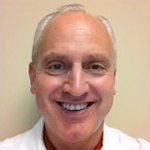What Did We Learn in 2013?
As the dawn of the New Year begins, perhaps it would be prudent to look back and chronicle a few selected teaching moments from 2013 that might have slipped past us.
Craig R. Hildreth, MD

No matter how capricious the politics of American health care loom this year, it is refreshing to remember that the science of medical care travels steadfastly and irreversibly toward perfection, tossing aside obsolete ideas and outdated solutions as it learns how illnesses develop and thrive. New facts are identified every day that once placed into the matrix of medical knowledge help to build a healthier future for us all. Short of an apocalypse, there is no turning back to the primitive days of medicine. We are getting smarter all the time.
Yes, we are-although some of us need to pay more attention in class, so to speak. As the dawn of the New Year begins, perhaps it would be prudent to look back and chronicle a few selected teaching moments from 2013 that might have slipped past us just when the lecturer thought he was addressing the cool, clear eyes of a seeker of wisdom and truth. Leaving aside science for the moment (let’s face it-with enough study halls anyone can complete their lessons), let us instead recall those intangible bits of insight that, if properly stored, work like a charm to produce better doctors. As we list some highlights from last year we shall chant our personal mantra: “Better late than never.”
1. If after starting a treatment your patient is doing better and the CT scans aren’t, be skeptical-of the scans. Some of the newer anti-cancer biologics work better on the subject than on the tumor measurements.
2. Oddball patients will always be with us. We can never corral them, but with a healthy dose of parental guidance, we can at least protect them from themselves.
3. If the only grade acceptable to you is an “A,” then only take tests-don’t try to care for patients.
4. Like retirement, sometimes the end of life can be planned for. Cancer, however, is disrespectful of time and may decide to kill before we have a chance to prepare to mourn.
5. Except in selected circumstances, cancer patients don’t get credit for partial surgical removal of their tumor. We should be experts at finding disease outside of the swath of the scalpel before the operating room calls.
6. Outside of the ICU, no oncologist will ever be criticized for delaying the start of a treatment while the correct diagnosis is confirmed.
7. The less frequently we laugh with our patients, the more frequently we will brood about how unfair it all is.
8. It doesn’t matter how outstanding or vital a cancer drug is-if the patient cannot tolerate it, they do not have to take it, and we will have to live with it.
9. Never assume that the instant we discontinue treatment the patient’s tumor is going to grow out of control. Nowadays some patients remain quite stable after stopping anticancer therapy, even if no “objective remission” has been achieved.
Finally, (also known as no.10), cancer patients usually don’t appreciate being cared for by sourpusses or egomaniacs. They will seek out nice doctors and once connected, they like to tell their story to the nice doctor over and over again. It comforts them to know that someone truly cares. Often they direct others diagnosed with cancer to go to their oncologist, to the point that the nice doctor becomes swamped with work. My advice is to cherish this moment, as it is our profession’s highest honor.